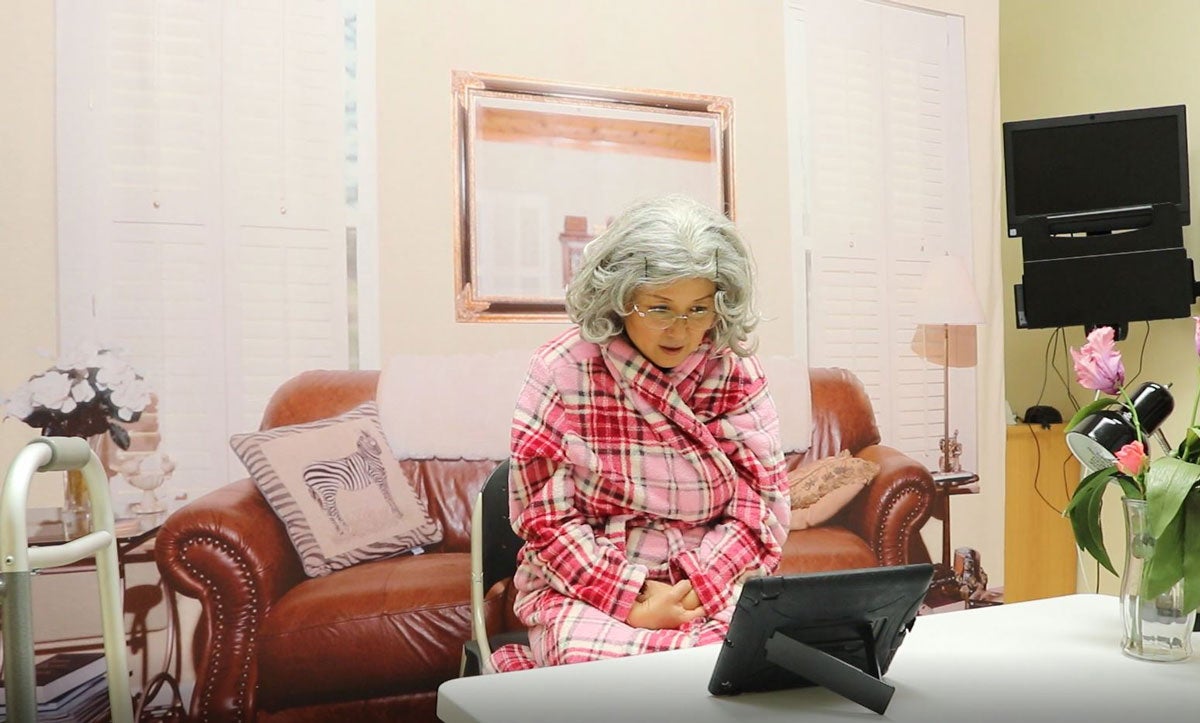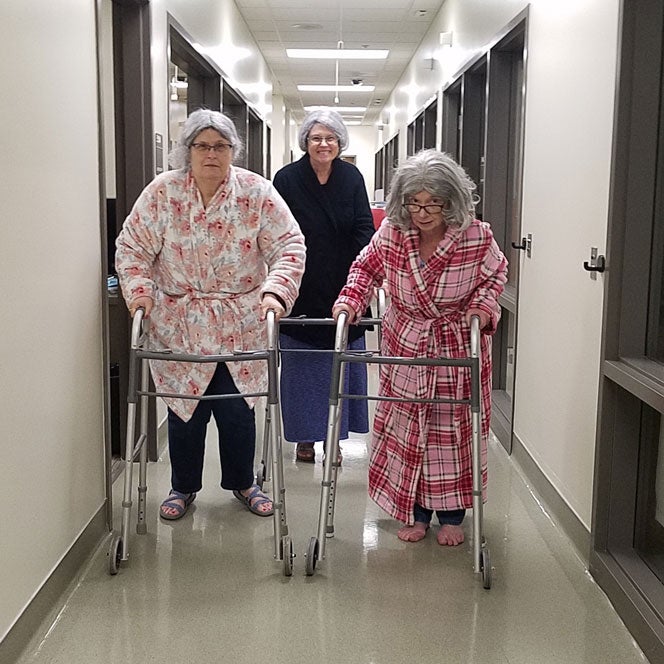The Simulation Center staff constantly innovates to keep their scenarios relevant and help students be the best prepared they can be to enter the workplace. One way they’re doing so is by talking to real people.
About two years ago, Kelley Connor, the director of simulation education and research at the School of Nursing, began what’s now known as the Patient Voice Project. Her goal was to create realistic simulated characters to help students understand the relationship between someone’s health and everything else that goes on in their life.
Connor and her research team interviewed seven different people for their full 360-degree story, not just their medical history. They condensed the information and changed details (like names and ages) to protect the privacy of the real people behind the stories.
Then, the interviews became the basis for fictional patients that students meet in simulated scenarios. As students progress through the two-and-a-half year pre-license program, they might see the same patient in several different clinical settings.

Getting to know Georgia
One such patient is Georgia Taylor, often portrayed by a standardized patient. Students interact with her and her family in a few scenarios with differing learning outcomes.
The first time students see Georgia, they’re completing medication reconciliation – comparing how she’s supposed to take her medicine versus how she’s actually taking it.

The next time they encounter her is in the hospital for a hip fracture. Later, they follow up to make sure she isn’t readmitted during a simulation about case management.
The final time students see Georgia is in their seventh semester when they’re in a palliative care class; Georgia is now in hospice and she’s dying.
“They see her in these different settings so that they can develop empathy for what a person is going through and the different issues that a person has when they interact with the healthcare setting,” said Connor.
Breaking down bias
The team also interviewed a patient who is obese; they met her through a body positivity group on Facebook. She exercises regularly, she feels very strongly about being body positive, and she shared about some really negative experiences she had in the healthcare setting as an obese woman.
“What we found in research is that her story matches the literature, as far as people feeling stigmatized from healthcare providers for their body weight,” said Connor. “So we developed some scenarios so we could talk about: What does it mean to be body positive? What kind of biases do you have? How might that come across, and how could you change it?”
Seeing the bigger picture
The team also used these interviews to develop scenarios that would help students realize how external stressors may impact someone’s health. In one scenario, a man brings in his foster son because of exacerbated asthma and the man feels bad for not knowing how to care for the boy.
These feelings compound in mental health problems, which students encounter in another scenario later on. The same man comes in seeking care for chest pains, which are actually physical manifestations of his anxiety and depression impacted by his home life.
“When you start to see him in these different situations you realize that ‘Yeah, I see why maybe you’ve got some anxiety issues and some depression issues, and how mental health plays a part no matter what setting you’re in,” said Connor. “It’s important for students to be able to see more of the bigger picture.”
Knowledge is empathy
“The Patient Voice Project is about developing empathetic nurses by simulating the knowledge of a person over time,” said Connor.
These scenarios are significant because they help students see that a patient’s care is not just about medications; it’s about how they access them, how they take them, and how their care works into other aspects of their family and social lives.